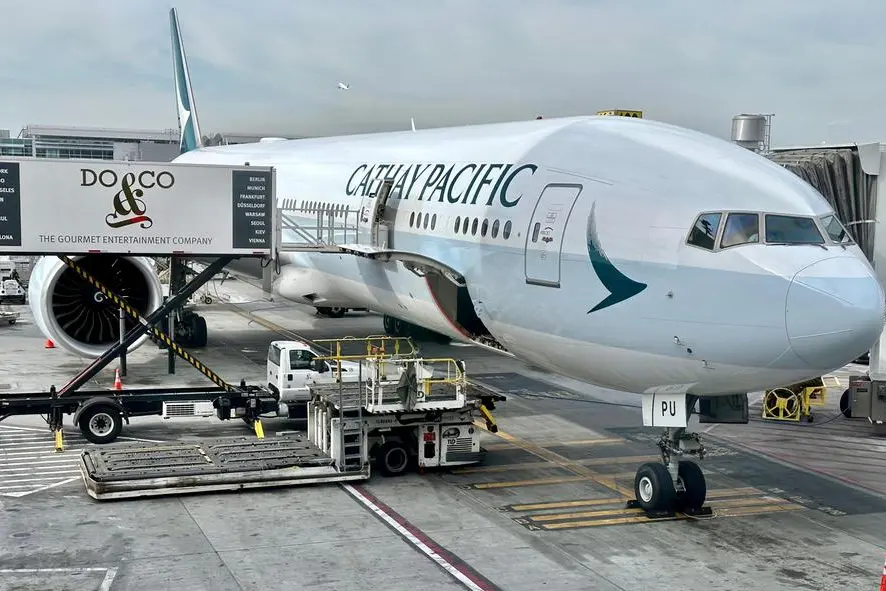PHOTO
A Korean Air airliner "struck" a Cathay Pacific plane while taxiing at a Japanese airport on Tuesday, with both airlines saying there were no injuries.
The incident comes two weeks after a near-catastrophic collision at Tokyo's Haneda Airport when a Japan Airlines plane collided as it landed with a smaller coast guard plane.
Cathay Pacific said the accident on Tuesday took place while its aircraft was parked at New Chitose Airport serving Sapporo on the northern island of Hokkaido.
"Our aircraft, which was stationary at the time with no customers nor crew onboard, was struck by a Korean Air A330 which was taxiing past," the airline said in a statement.
Korean Air also confirmed there were no injuries on board its plane.
"A Korean Air aircraft came into contact with a Cathay aircraft during pushback at New Chitose (Sapporo) Airport when the third-party ground handler vehicle slipped due to heavy snow. There were no injuries and the airline is cooperating with all relevant authorities," the carrier said.
Neither airline gave information on the amount of damage done nor on the cause. The operator of the airport, Hokkaido Airports, was not immediately available for comment.
But Hong Kong-based Cathay said that its "flight CX583 from Sapporo to Hong Kong will not operate as scheduled."
Airport firefighters were on standby following the accident, but no oil leaks or fires had been confirmed, according to Hokkaido Cultural Broadcasting.
The operator of the airport received a report of contact between the two passenger planes around 5:30 pm (0830 GMT), public Japanese broadcaster NHK said.
Hokkaido has been hit by a cold front in recent days with heavy snow warnings issued in several cities.
According to reports, 46 flights were cancelled on Tuesday due to heavy snow.
- Tightened protocols -
In the January 2 incident, all 379 people on board the Japan Airlines Airbus escaped just before the aircraft was engulfed in flames. Five of the six people on the smaller aircraft died.
The Japanese government announced last week that it has tightened its air traffic control protocols after the accident.
Under the new requirements in place nationwide, a staff member must constantly watch a monitoring system that alerts control towers when runway incursions take place.
And to prevent misunderstandings, controllers must not tell planes what number in line they are for take-off, the ministry said in statements uploaded to its website.
"One of my biggest missions is to restore confidence in aviation as public transport," Transport Minister Tetsuo Saito said.
The ministry also said it would set up an expert panel to investigate further ways to improve safety.
A transcript of communications released by the ministry suggested that the JAL plane was cleared to land, but the coast guard plane was instructed to halt before the runway.
Controllers told the coast guard plane that it was "No.1", meaning next in line for take-off.
But the coast guard pilot -- the only survivor -- has reportedly said he believed he had clearance to move onto the runway, where his plane stood for around 40 seconds before the crash.
In the decade to 2023, at least 23 "serious incidents" that risked a runway collision were reported by the Japan Transport Safety Board, according to the Asahi newspaper.
In five of the cases, mistakes in air traffic control were suspected as a cause, the newspaper said.




















